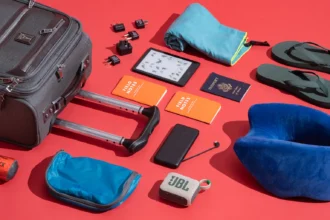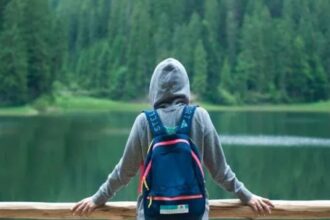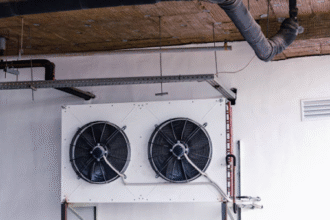Imagine yourself standing on a high ridge, the wind tugging at your jacket, and below you, endless peaks, deep valleys, fluttering prayer flags. Nepal’s trails are full of magic, but the Manaslu Circuit and the Langtang Valley treks each have their own flavor of adventure.
If you’re craving true wilderness and don’t mind a tougher slog, the Manaslu Circuit Trek will grab you by the heart. You’ll spend around two to two and a half weeks trekking roughly 170–180 km in a big loop, crossing the 5,160 m‑high Larky La pass along the way. There aren’t many lodges once you climb above the tree line, and some of the river crossings can get your pulse racing, so expect to carry a bit more gear and embrace a few rough days. Those long marches give you space to sink into the rhythm of the mountains, glacial streams, fluttering prayer flags, and the occasional yak train for company.
Langtang Valley feels almost like a friendly neighbor in comparison. In just a week to ten days, you’ll walk a back‑and‑forth route of about 60–80 km, topping out under 4,800 m. The trail is busy enough that you’ll never be far from a steaming cup of chai or a simple dal bhat at a tea house. Days tend to be shorter, which means more time to chat with village families or wander through thick rhododendron groves bright with spring blooms.
When it comes to views, Manaslu is like the deluxe ticket: jaw‑dropping panoramas of Manaslu itself and its eight‑thousand‑meter neighbors unfurl from wide meadows and rocky passes. Everything feels a bit more “pure,” too fewer trekkers, more Tibetan‑style hamlets and a sense that you’re truly carving your own path. Langtang Valley packs its own punch, though. Towering cliffs plunge beside you, Tamang homesteads dot the slopes, and if you’re up for a side adventure, the icy lakes around Gosainkunda won’t disappoint.
On the practical side, Manaslu requires a restricted‑area permit (plus a mandatory guide or porter) and a willingness to put up with a bumpy jeep ride in and out. It’s more expensive and logistically involved, but that’s part of its secluded charm. Langtang’s permits are simple and cheap, you can go solo if you like, and jeeps roll to the trailhead daily. Lodges are plentiful, so you won’t have to haul luxury items in your pack.
Let’s walk through both trails step by step, in everyday language no fancy jargon so you can feel the trail under your boots before you even leave home.
The Big Picture: Distance, Time, Effort
- Manaslu Circuit
- Length & time: Roughly 110 miles (about 14–18 days on foot).
- Feel: A grand loop around Mount Manaslu, peaks rising up like giants. Long walking days, especially when you cross Larky La (5,106 m).
- Effort: Be ready for 7–9 hours of hiking each day, sometimes on rocky, snowy paths.
- Langtang Valley
- Length & time: About 40 miles round‑trip (7–10 days).
- Feel: A cozy valley cradled by forests, glaciers, and friendly villages. Shorter days with 4–7 hours trekking.
- Effort: Sudden climbs here and there, but generally kinder to your legs and lungs.
Walking the Trail: What You’ll See
Manaslu’s Wild Majesty
On Day 1, you leave the buzz of dusty Kathmandu for winding roads and green foothills. By Day 3, you’re in pine forests, breathing in the scent of earth and pine resin. As you climb toward Lho and Sama Gaun, stone mani walls and prayer flags become your constant companions. Then comes Bhimtang, a tiny cluster of lodges perched above the valley floor where is your first taste of the real altitude.
Crossing Larky La is like stepping onto another planet: cold winds, thin air, and a 360° panorama of snowy summits. Your heart pounds, not just from the altitude, but from awe. On the far side, glacier‑polished rocks and sweeping valleys reward every hard step.
Langtang’s Gentle Beauty
From Syabrubesi, the trail threads through mossy forests alive with bird calls. Watch your step for marmots darting across the path. At Ghoda Tabela, horses grazing on grassy ridges feel almost like postcards.
Higher up in Langtang Village, smoke curls from chimneys and children wave “Namaste!” with shy smiles. A few more hours’ climb brings you to Kyanjin Gompa, a tiny settlement beneath a massive icefall. Climb up to Kyanjin Ri for an up‑close look at Langtang Lirung’s craggy face and you’ve hit the trek’s high point.
Getting Ready: Permits, Packing, and People
- Permits & guides
- Manaslu is a restricted zone so, you’ll need a special permit and a licensed guide.
- Langtang just needs a national park permit and your TIMS card; guides are optional but great for local insight.
- What to pack
- Must‑haves: Warm layers, a down jacket, sturdy boots, sunscreen, water‑purifying tablets.
- Extras: A small pillowcase, hot‑water bottle (for snug sleep), earplugs (snoring is part of the charm!), and a few luxury snacks chocolate or nuts go a long way.
- Food & rest
- Both trails run on dal bhat (rice and lentils) fill‑your‑plate refills keep you fueled.
- Tea houses are basic: shared rooms, squat toilets, and sometimes just a single light bulb. Hot showers cost extra, usually USD 3–5.
Money Talk: Budgets in Simple Terms
- Manaslu Circuit: Plan on USD 1,000–1,400. This covers your permits, guide, teahouse meals, and a few comforts (porters, hot showers).
- Langtang Valley: it will cost roughly USD 500–800 as this trek has fewer days on trial, cheaper permits, and you can skip a guide if you’re confident.
Who is It for?
- Choose Manaslu if you have following interest and qualities:
- You’ve done a few tough hikes already.
- You crave solitude on some days you might meet only a handful of trekkers.
- You’re ready to push past 5,000 m for those heart‑stopping views.
- Choose Langtang if you have following interest and qualities:
- You want something shorter or are on a tighter budget.
- This is your first real high‑altitude trek and you’re curious but cautious.
- You love forests, wildlife, and vibrant village life.
Weather and Timing: When to Go
- Spring (Feb–May):
- Rhododendron forests burst into pink and red.
- Manaslu still has some lingering snow, so bring crampons if you can.
- Autumn (Sep–Nov):
- Clear skies, crisp air, and comfortable days.
- Trails get busy book your teahouses and guides a month in advance.
- Avoid:
- Monsoon (Jun–Aug) rain, leeches, and landslides.
- Deep winter as the roads can close, and high passes might be impassable.
On Cultural Connections
In Manaslu circuit trekking, you step into a Tibetan‑flavored world. Monasteries perch on hills, and prayer wheels’ spin with every breeze. You might join a morning puja (prayer ceremony), listen to monks chant, or share tea with villagers in traditional dress.
In Langtang, the Tamang community welcomes you like family. Kids run alongside the trail with homemade sweets, and teahouse owners pause their cooking to chat about local legends. Many lodges are community‑run, so your stay helps fund schools and clinics.
Tips from the Trail
- Acclimatize slowly by adding a rest day at 3,000 m or 4,000 m if you feel dizzy or exhausted.
- Stay hydrated, and keep drinking water constantly even when it’s cold.
- Pack light as every extra kilo feels like five kilos at altitude.
- Be flexible because weather, trails, and health can change plans, go with the flow.
- Carry snacks as quick sugar boost at midday feels like a party in your mouth.
Final Thoughts
Whether you choose the grand loop around Manaslu or the cozy valley of Langtang, Nepal will sweep you off your feet in the best way. One path tests your grit with lofty passes and raw landscapes. The other wraps you in forests, glaciers, and warm village smiles. Both will leave you with a deeper respect for the mountains and for yourself. So lace up, breathe deep, and let Nepal’s trails write their story in your heart.
In the end, choose the Manaslu Circuit if you’re after a longer journey, higher passes, and the magic of a trail that still feels wild. Opt for the Langtang Valley Trek if you want a shorter, logistically simpler trek that still delivers towering peaks, cultural immersion, and cozy teahouses every evening. Either way, you’ll be rewarded with unforgettable Himalayan memories.

















